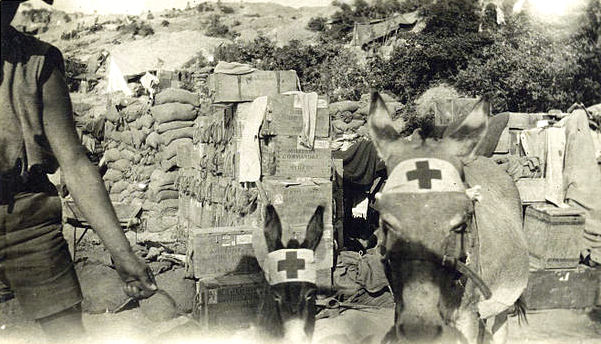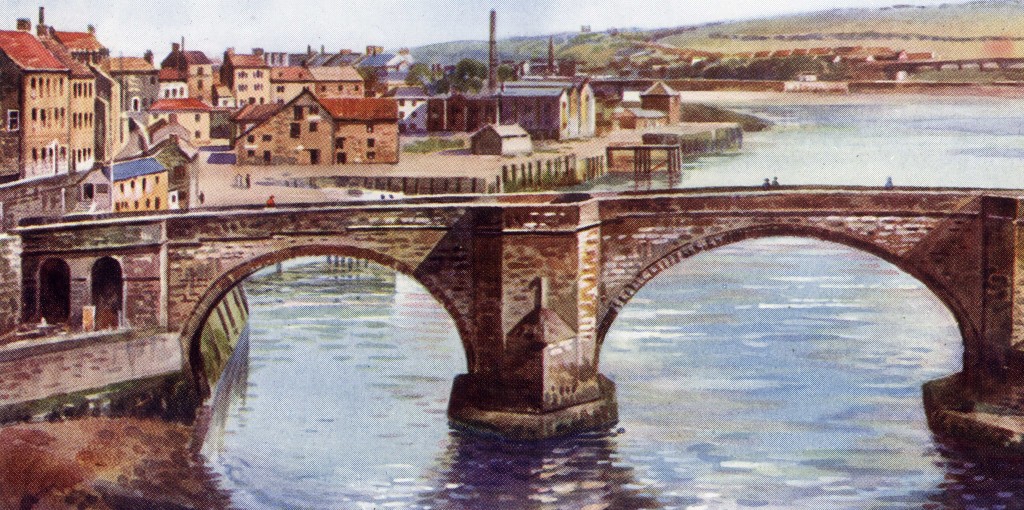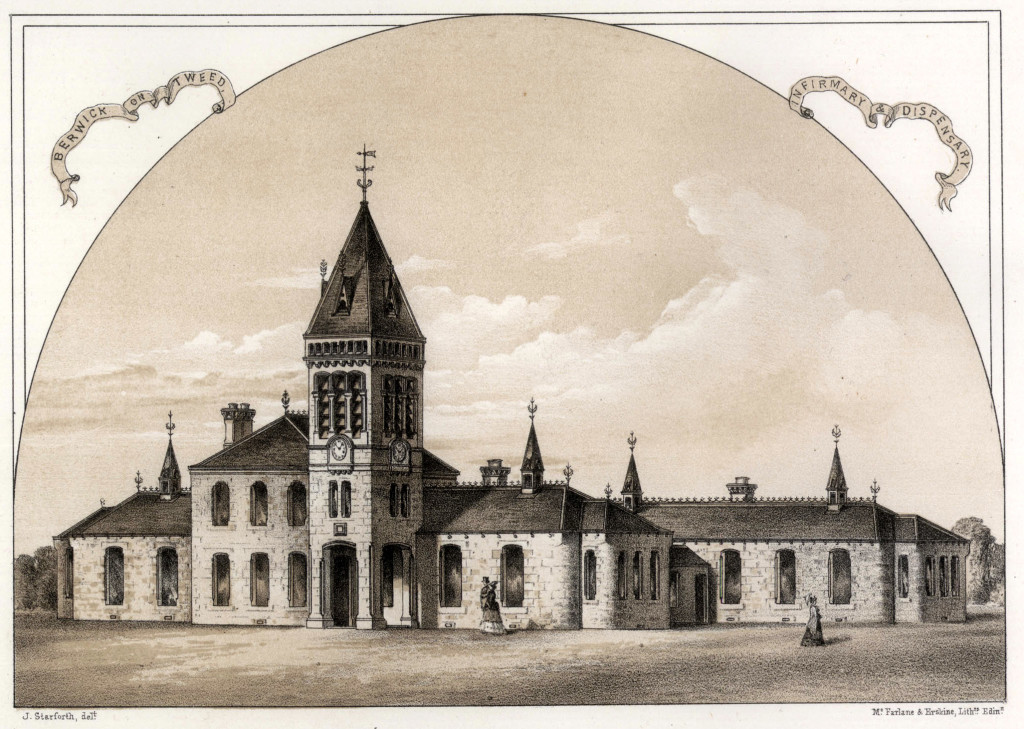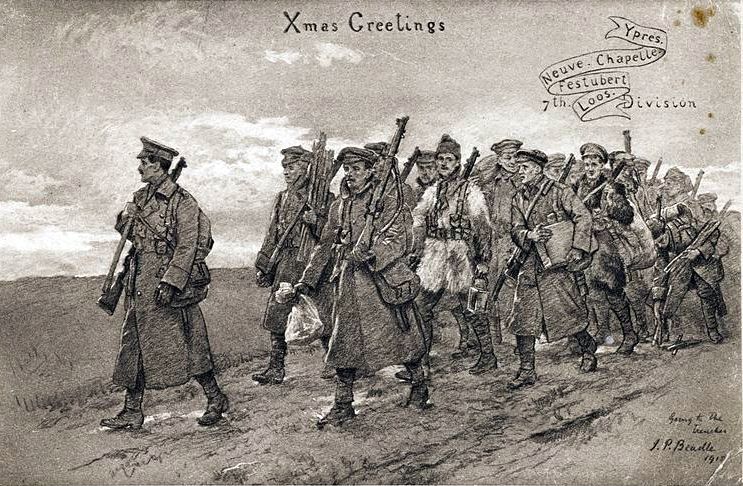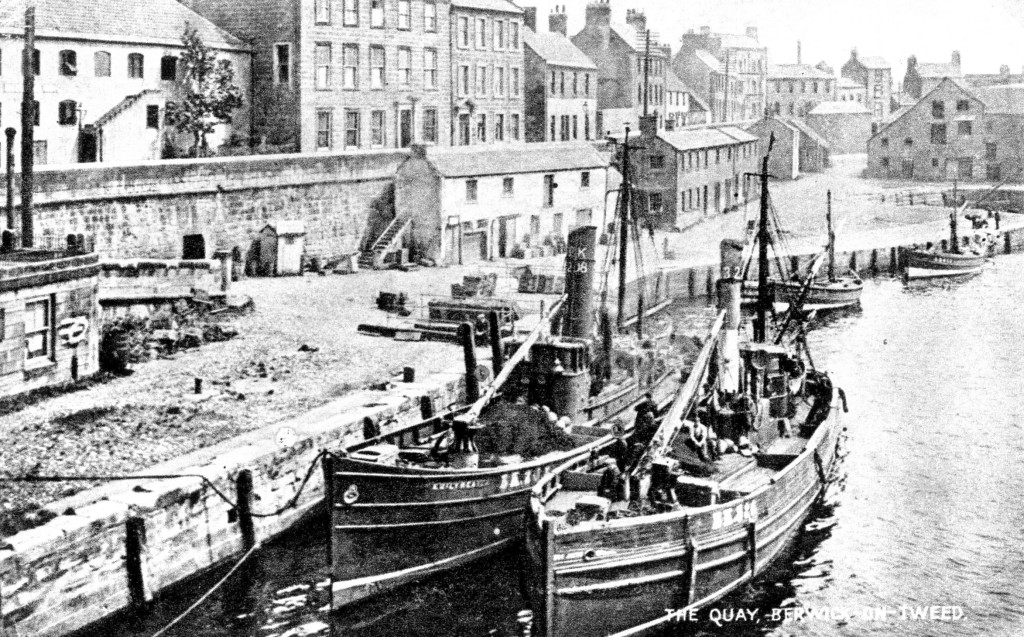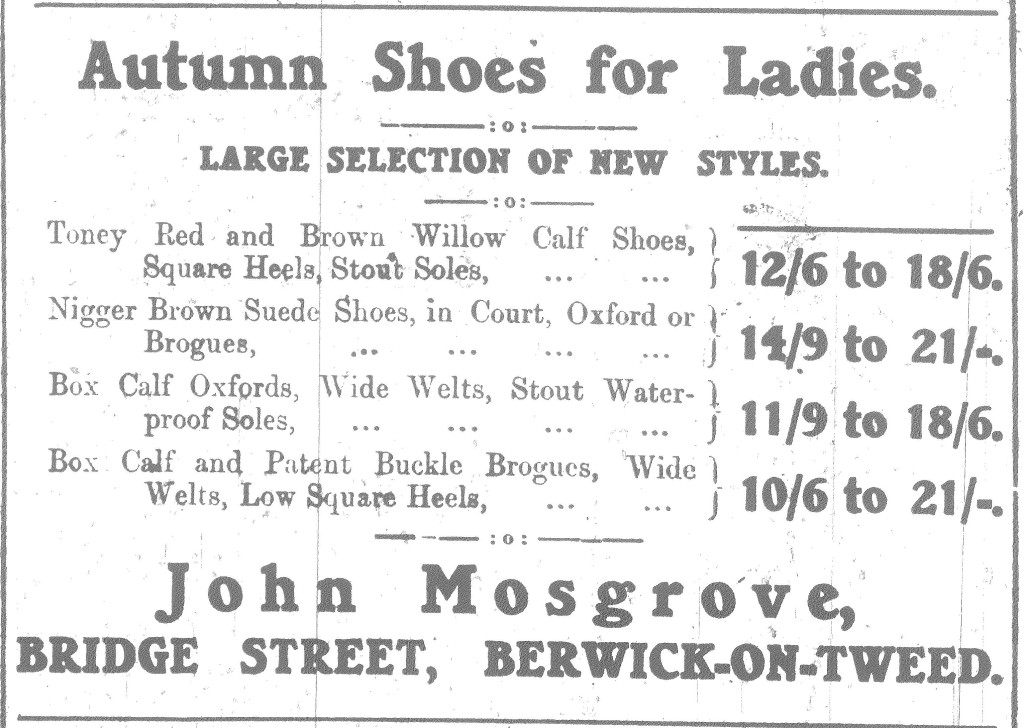On the 1st May, 1871, evidence was taken before the Coroner’s Jury to discover why Mr James Turner had been tragically killed on Stamford’s level crossing only five days prior. The inquest saw seven witnesses testify, including James’ thirteen year old son and the seventy-three year old level-crossing gate-keeper. The inquest was focused upon three things; firstly whether James’ had been in a state fit enough to drive the cart, secondly whether Edward Dixon (the gate-keeper) should have shown his semaphore signal (danger signal) or even opened the gate at all, and thirdly whether the oncoming train had sounded its whistle. Changing any of these three variables could have saved James’ life and, by proving safety regulations were not adhered to, could end the careers of three men.
The story of James Turner had started long before that fateful afternoon in Stamford. He had been born to Alexander Turner in Wooler, around 1829, and married his wife Mary Moone on the 15th January 1844 at Christchurch in the parish of Tynemouth. The couple had five young children by 1871; John born in 1858, Elizabeth born in 1860, James born in 1862, Margaret born in 1865 and Alexander born in 1867. James had kept his family clothed and fed by working as a ‘hind’ for Mr Davison.

On that fateful day in April 1871 James had let his eldest son, John, accompany him whilst he delivered potatoes from his cart. The thirteen year old John gave a brave and emotional testimony of that fateful day before the packed court. He confirmed that they had been travelling from Stamford to Heifeilaw Bank with three carts of potatoes, and “Father had charge of two carts (second horse tied to the first cart) and I drove the third cart.” After they had delivered the potatoes to Mr Craven they were invited to stay a while in his house. During the inquest John maintained that neither had consumed alcohol whilst on Mr Craven’s premises, but eyewitnesses who saw James later that day noted that he looked “lazy and glazed.” On their way home they crossed the railway at the Stamford level crossing, and John described the harrowing event in vivid detail;
“Father had reins upon his horse but I cannot say he had hold of them. I did not call to my Father. I could not see along the line to the north (there was a big bridge ramp); the Gatekeepers house prevented me. The West gate was open. I saw the Gatekeeper Edward Dixon as the first horse was facing the line standing at the east side of the line below the Gate at the rails adjoining the Gate. I cannot say whether the East Gate was open or not but the West one was. I saw no one with the Gatekeeper …. as the cart got onto the up line the Engine came from the north and struck the horse and the fore part of the cart. I pulled up. I did not see what came of my Father. I cannot say how far the Engine went. The next thing I saw was Father lying on the 6 foot with his head on his right arm on his face. He was clear of the rails – he was senseless. I cannot say he was bleeding – I cannot say who took him off. The Gatekeeper was leaning against the rails. The carts did not stop at all – Gatekeeper was looking towards us – this was a few minutes after 6pm.”

Local news reports also relayed a similar tale; commenting particularly upon the brutality of what his son had to witness. Clearly in shock following the incident, John could not recall who helped his father but those individuals also took the stand before the coroner’s court. One of those was Thomas Carr, a platelayer who lived in the cottage on the west side of the Stamford crossing, he recalled how “my boy shouted out Turner was killed …. I ran out – on the upline I saw the Engine … standing 100 yards from the crossing to the south. The horse was dead & 29 yards from the crossing. Part of the cart was on the west line. James Turner was lying on the 6 foot way – with his head on his right arm on his right side, face downwards. The Gatekeeper was standing on the up line above the crossing. Deceased was insensible, I went away for assistance.” Another, Stephen Rea, was also a resident at the crossing and said that he went to help when he heard the Gate keeper shouting a man had been killed. The men took James home where he was attended by Dr Henry Caudlish, who “found [the] deceased suffering from concussion of the brain and inflammation of both lungs, caused by an accident such as has been described by the witnesses. I saw him also that evening and up to his death – which took place from the injuries received on Saturday the 29th at a few minutes past 12. The deceased was a vigorous man in a healthy state of body.”

Why James had been able to take his cart over the crossing when there had been a scheduled train approaching confused both the coroner and the media. Thomas Carr called the gatekeeper Edward Dixon a “steady man” who had been in the service of the Railway Company for 23 years. Carr attested to knowing of the regulations of the crossing and that; “it is the Gatekeepers duty to ascertain if there is a train coming or an Engine on the line, before he opens the Gates and he must be satisfied none is in sight before he opens either Gate. He should also show his danger signal (semaphore signal) and keep it exhibited till the line is clear. Then he closes the gate and alters the signals. When on the line an Engine can be seen on a clear day ¾ of a mile to the north and about 1 ½ miles to the south. The express was due at Bilton about 6 o’clock p.m. and at the crossing 10 minutes later. Gatekeepers duty is to stand on the 6 feet to look for her coming. The Express was at this time on Thursday night. I was in the cottage at 10 past 6 but I heard no whistling. My cottage looks onto the line to the east.”
The absence of a whistle, and the need for a semaphore signal, was also noted by other witnesses. Stephen Rea did not hear a whistle or see any signals before the unfortunate event, but he also asserted that Dixon was “perfectly steady, I never saw anything amiss … Dixon’s age is about 70 years, his sight and hearing are perfect. From half past 5 in the morning till 10 at night, his duties last, no person attends between times 10 at night and half past 5 the next morning. He gets one Sunday in the month to himself.” Had a twenty-three years of long hours and stressful work finally overcome the aging gatekeeper? Was he guilty of incompetence by not raising the semaphore signal and forgetting that there was a scheduled train?

The train drivers, Richard Dobson and Hugh Laing, certainly believed that fault lay with the gatekeeper. They confirmed that they had “left Newcastle on Thursday last with train leaving at 1.30 p.m. We left Tweedmouth a 5.12p.m … When we got to the back signal before coming to Stamford Laing blew the whistle – I am certain of it. That is about 600 yards before coming to the crossing. The rule does not say he is obliged to whistle and the Drivers act on their own discretion. At that time the rate would not exceed 24 or 25 miles an hour.” The driver, Hugh Laing, had been 23 years in the service of North Eastern Railway and tragically recalled how “When we were about ½ way between the back signal and the crossing I saw the Gatekeeper cross from the west side to the east side of the line – he had no white signal in his hand that I saw. Nor yet was the semaphore signal up I would have topped. The Gatekeeper went to the east gates and I expected he was going to shut them. I then stepped to the left side of the Engine & I saw the Gateman return to the line holding up his hands as if to stop something coming from the west. I was about 50 or 60 yards north of the crossing. I then saw almost immediately the horse & cart come on to the down line. I couldn’t see anyone in it. It kept on and the Engine struck it at the crossing. I had reversed the Engine and pulled up at about 60 yards past the crossing and then went back and saw the deceased on the 6 foot. I assisted in taking him off the line. No notice of the Engine and tender was given to the Gatekeeper. I applied the brakes before the collision as soon as I saw the horse and cart. I could have seen a man if he had been on the cart. It was impossible to stop the Engine sooner.”
This damning evidence of witnesses proved that Edward Dixon, the gate keeper, had failed in at least some of his duties. Edward had been born in the Bamburgh parish and, like Mary Turner, had been widowed with a young family. He had flitted between residing with his daughter Julia and a family called the May’s. Following the subtle indications of his guilt, Edward was finally able to address the coroner’s court as its final witness;
“I am the crossing keeper at Stamford station on the North Eastern Railway. I have been there 10 months. I go on at half past 5 and my duties end at 10p.m. I am 73 years of age. My sight and hearing are not impaired, I can see and hear as well as ever I did. My duty is to watch the gates and shut and open them on anything crossing the line. I have no instructions as to which Gates to open first. I think not, but I generally open the far one first. On Thursday last about 10 past 6 I was opening the East Gate. I saw the carts a minute or two before coming towards the West Gate and I saw the man lying with his head on the fore part of the Cart with his back to the North, he did not speak. When I observed him coming on the line the West Gate was open and I crossed to open the East Gate. I saw nothing coming till I turned round from the Gate. I then saw the Engine & Tender coming perhaps 100 yards from the crossing. I then shouted to deceased and held up both my hands at the last shout he looked over his shoulder lazily and came onto the line. When I shouted first he was just coming in at the West Gate. I heard no whistling. I could have heard a whistle from the back signal post. The wind was from the West but there was a goodish breeze which might carry the sound away. It is my duty to look both ways North and South before opening the Gates. I looked both ways and saw nothing. From the time I went to open the West Gate till the Engine and Tender came up it would scarcely be a minute I could have seen them if they had been at the back signal. He was not within the signal. I was watching the Express…. Unless I see something on the line I do not use the semaphore signal. I have been occasionally a Crossing Keeper before I came here. I live at Lucker but I lodge at the Gate. I never saw the semaphore used unless there was something on the line. I feel no inconvenience from the hours. About 8 or 10 Carts in a day, about 14 or 15 vehicles each way will cross. The semaphores are not used unless there is danger and I saw no danger. There is no rule that I am to put up the semaphore signal every time to open the Gates, that I know of. There is a copy of the Rules in the cabin, but partly defaced, I have read them. I always use the semaphore signal when stock (cattle or sheep) are crossing but not when Carts are crossing. I had no knowledge of the Engine and Tender coming back. I have 12/- a week. Rule “175 says” When the Railway is required to be crossed the Gatekeeper shall before opening the Gates shall satisfy himself that no Engine is in sight – he shall then show his Danger Signals and keep them exhibited until the line is clear when he shall close the Gates and after the signals.”
The inquest duly listened to all the witness statements that day and returned a verdict which found severe failings in the way the Railway Company treated its staff. They concluded that James had died from his injuries sustained at the crossing, and called to the Company’s attention the long hours Edward was required to work and the fact that he was not informed when “special” services were running.
Whether Dixon or the train men were to blame was immaterial to James’ widow Mary. She had lost her husband and the family’s main provider, but the coroner’s inquest gave her a platform upon which to receive compensation from the railway. She was also awarded the jurors fees for her loss. But her recovery from despair was short-lived; as in June 1871 she also lost her daughter Margaret to sickness. This was a sad turn of events which was recorded in the notes of solicitors working for the Dickson, Archer and Thorp firm.

We would like to thank the volunteer who kindly transcribed the documentation around this case and provided additional information through careful research. We would also like to thank the volunteer who digitised the items to enable us to share them with you.



